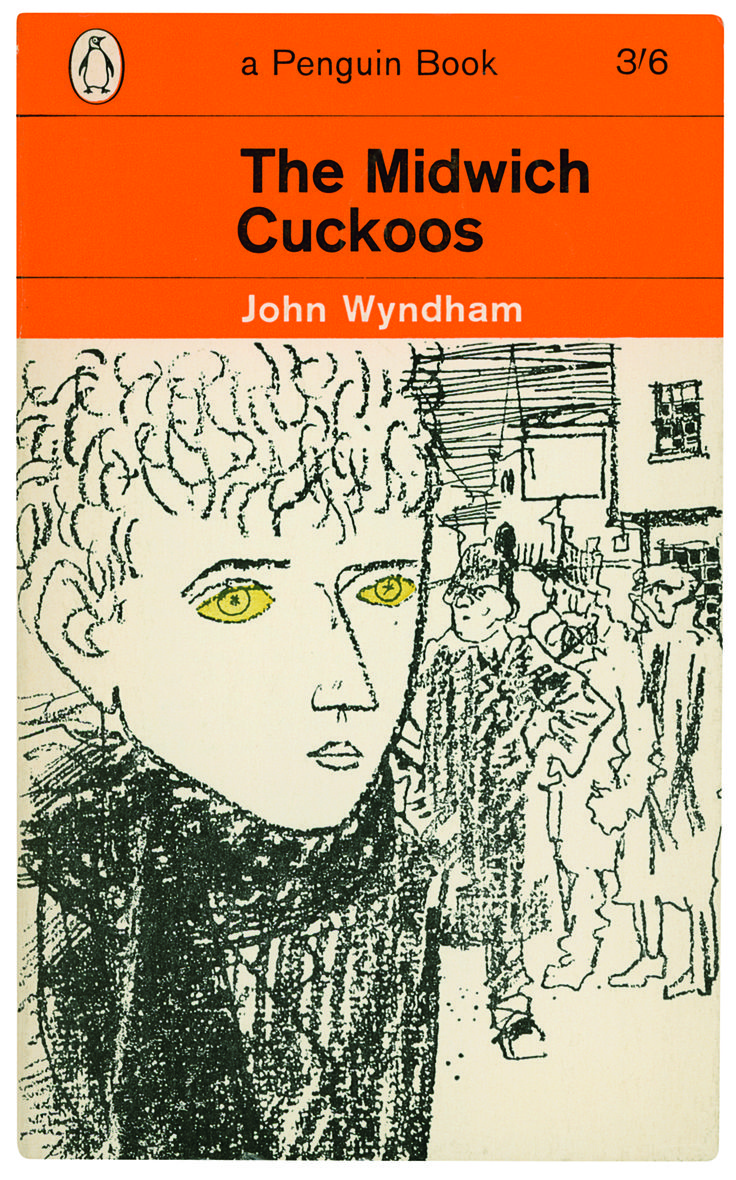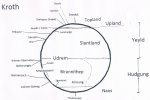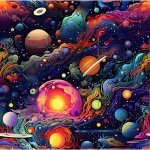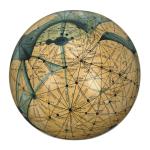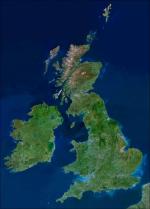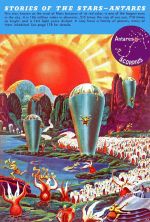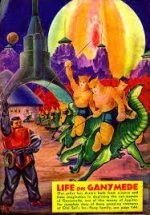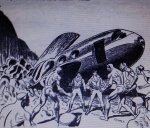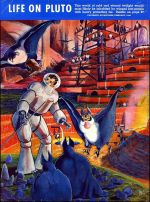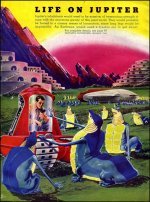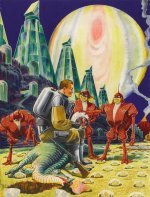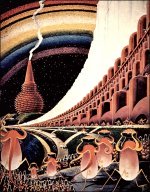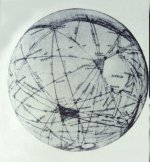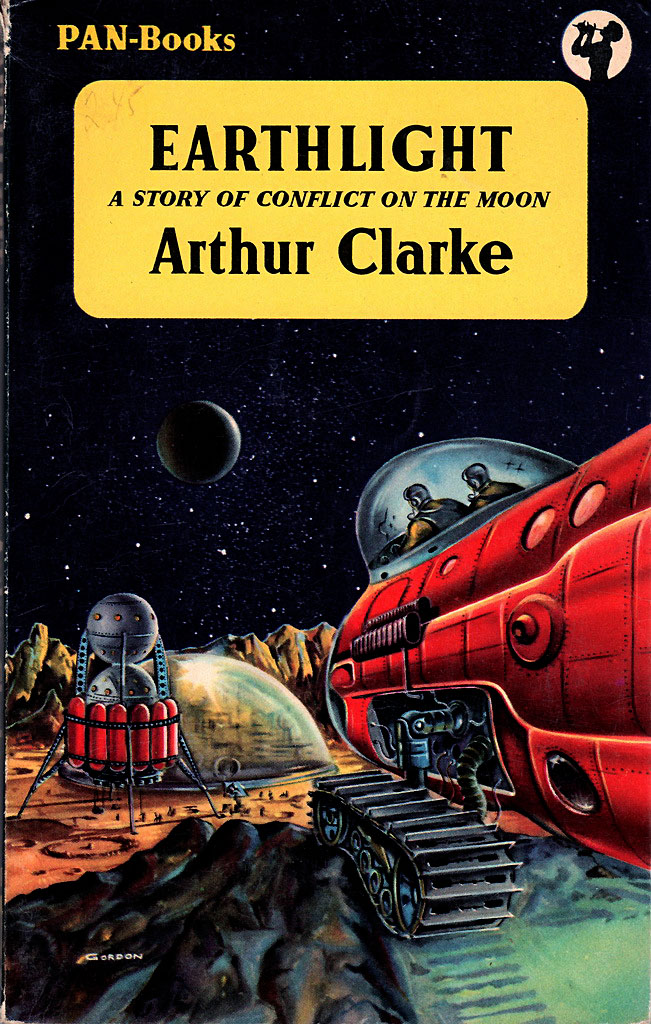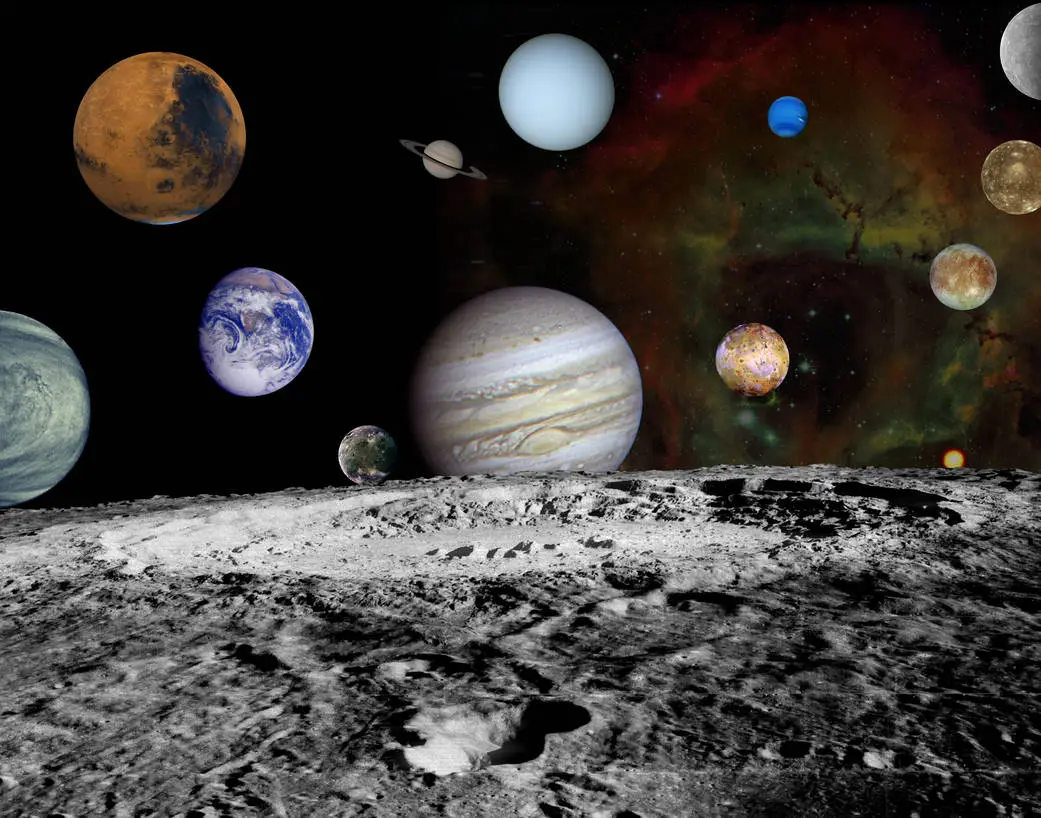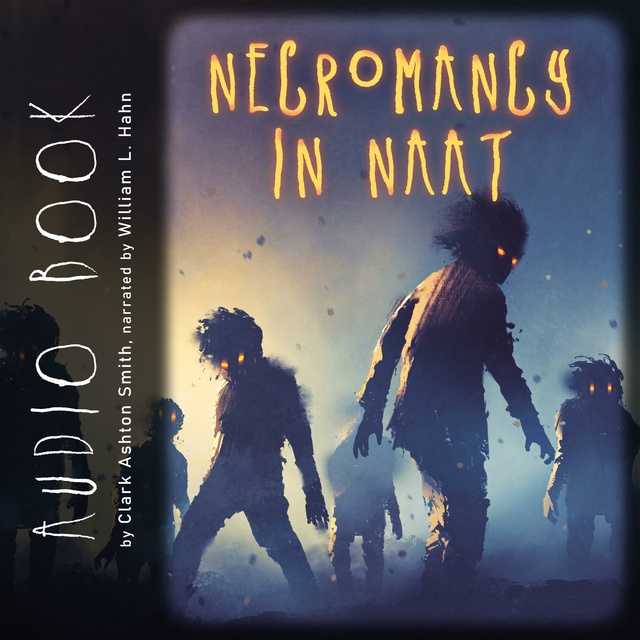a brief history of ooranye
8: the argon era
[continued from 7: The Great Fleet]

Though often thought of as a gentler successor to the splendid Phosphorus Era, the Argon was splendid enough in its own twilit way. It has an aura of mystery, of romance, which its mightier predecessor in some ways lacked. Perhaps also its culture possessed a certain serene wisdom which originated in the 24 minutes’ bath of emanations from the Bank of Light.
Era 18 lasted 12,666,934 days, or 516 Uranian years, equivalent to 43,350 Earth years.
In this period the profession of Wayfarer – the individual on a skimmer, voyaging to provide survival-statistics for the maps – flourished as never before. Partly this was because fewer resources remained for the more expensive patrols by airship or dlax. But also, it was fitting that lone travellers should henceforth provide most of the data on which the peril contours of maps were based – since the concepts of Syoom and Fyaym became somehow more immediate and personal in the humbler, gentler glow of this era. The old pursuit of – and belief in – power had become muted. Nennkind had come to terms with the fact that Fyaym could never be conquered.
The change was not only in the methods of wayfaring but also in its objectives. Argon Era wayfarers, unlike Phosphorus Era patrollers, were not expected to understand. As in all later eras, they were required only to try their best to survive their journeys. To do that, and that alone, was to count as a success. Survival or non-survival provided the only data which the cartographers were interested in recording. This was a return, a permanent return, to the original Syoom/Fyaym concept promulgated in the Helium Era. Admittedly some of the greatest adventurers did succeed in understanding what they saw and in clearing up some mysteries and solving some crises, but this was beyond the call of duty. The lowering of expectations was perhaps the most important aspect of the general “trimming of sails” which civilization underwent in the transition between the two great eras, 15 and 18.
